Tag: welding technician training

A career in welding requires skilled professionals with an awareness of health and safety practices. Professional welders often work in extreme conditions involving high temperatures, gases and fumes, electrical voltage, and ultraviolet rays. Knowing how to safely operate industry-grade equipment within that environment is an essential skill.
One of the most common tools in welding is an angle grinder. Grinders are used extensively in the preparation of work to cut, grind, blend, buff, and clean metals. While grinders are a common feature of welding, they still carry a number of safety hazards. That’s why it is important that those in the industry learn how to properly use a grinder in order to minimize the associated risks. If you’re considering joining the welding profession, keep in mind these safety tips when working with a grinder.
Make Sure to Choose the Right Wheel
First and foremost, you need to ensure you have selected the right wheel for the material and application. For example, a grinding wheel should never be used to cut, and a cut-off wheel should never be used to grind. Likewise, using the wrong grinder for your chosen material can cause damage to the wheel. If you were to use a wheel meant for steel on aluminum, the wheel could become clogged and break down during the process. Professionals with welding technician training will be able to identify the designated uses of different grinding wheels.
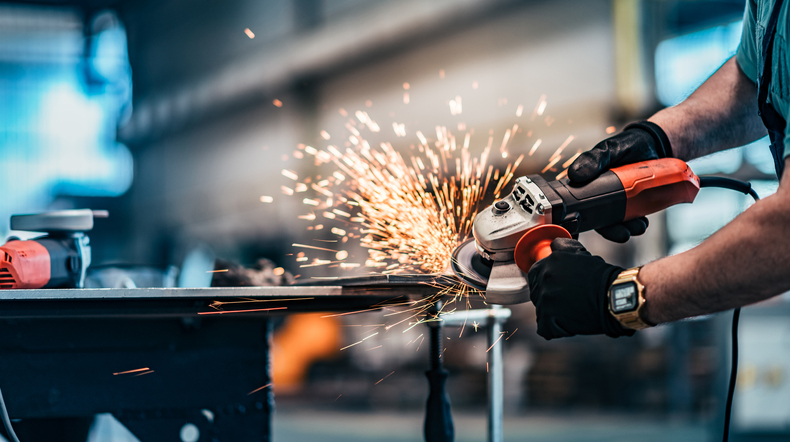
It’s also important to pay attention to the revolutions per minute (RPM) of a wheel to ensure you don’t exceed the maximum RPM recommended by the manufacturer. While a wheel may fit on a grinder, it doesn’t mean it’s intended for that grinder. You never want to use a wheel on a grinder with a different RPM rating. It’s a good idea to check the label on both the wheel and the grinder before assembling the two parts.
Always Use a Wheel Guard
As a professional welder, you’ll likely use a grinder in a variety of ways and over a prolonged period of time. Naturally, grinders are subject to cracks and damages with extensive usage. It’s important to ensure that a grinder is in good condition before using it, and to properly install the wheel guard.
Wheel guards are used for deflecting sparks and debris away from the operator, and to protect users in the instance that the wheel guard detaches. Grinding wheels are at risk of cracking or breaking, and if this happens, pieces of shrapnel can be sent flying. For that reason, it’s essential to use the proper wheel guard in the correct position at all times. Most guards provide 180-degree coverage, and can easily be adjusted so that the exposed part of the wheel is positioned away from you.
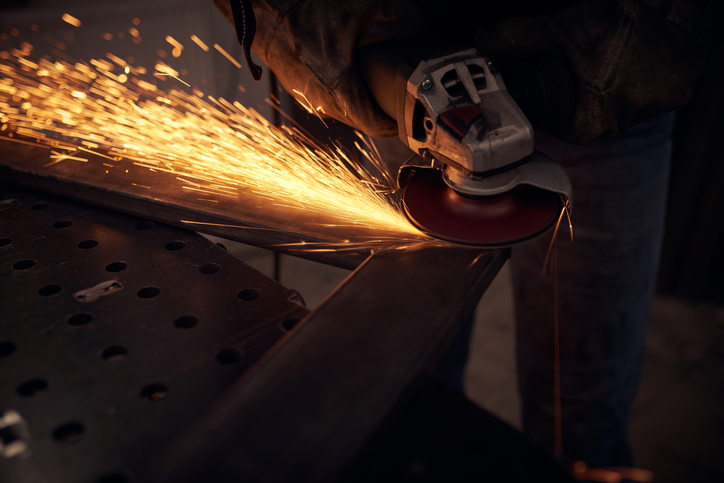
Take Care of Your Space After Welding Technician Training
Students in welding classes can expect to take courses in health and safety, where they learn to create a safe work environment and to minimize general hazards in welding. When using an industry grinder, it’s important to take measures to protect your face and body from harmful materials.
Before starting their work, professionals should wear all of their Personal Protective Equipment (PPE), including safety glasses, a helmet, ear protection, gloves, and aprons. These will protect operators from abrasive particles. It’s important not to wear loose-fitting clothes or jewelry while grinding, and to keep hair away from moving parts.
By preparing yourself for the workplace and remaining mindful of your surroundings, you will be able to perform your job safely, efficiently, and effectively.
Are you interested in welding college?
Contact NATS to learn more about our program!
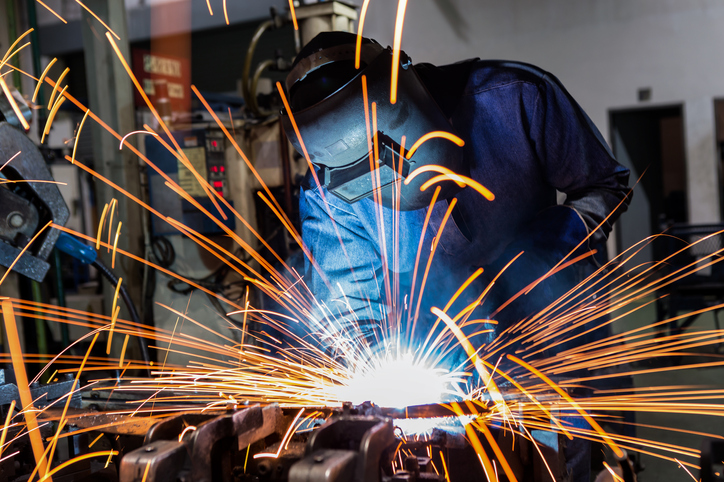
In a welding project, arc-on time has a direct effect on the number of parts completed during manufacturing operations. However, what many manufacturers don’t realize is that the average arc-on time is typically 10% to 12% of the welding process. Increasing arc-on time can result in improved productivity and cost savings, and thus, welding professionals should make boosting this metric a priority. There are many factors that contribute to improved arc-on time, and in order to see results, the entire welding process must be considered.
If you’re training for a career as a welder, here are three ways to increase arc-on time during a welding project.
1. If You’re in a Welding Career, Increase Arc-On Time By Choosing the Right Welding Process
If you’re having trouble increasing your arc-on time, start by analyzing the welding process you’re using. Making a change to the process can result in improved efficiency and increased arc-on time, but many manufacturers are hesitant to make this change due to the reapproval and further training necessary to switch processes. Options for welding processes include standard GMAW (gas metal arc welding), modified short-circuit GMAW, or a pulsed GMAW process. Switching from a standard to a pulsed process can result in benefits such as increased travel speeds, lower heat input, and reduced amounts of spatter, contributing to increased arc-on time.
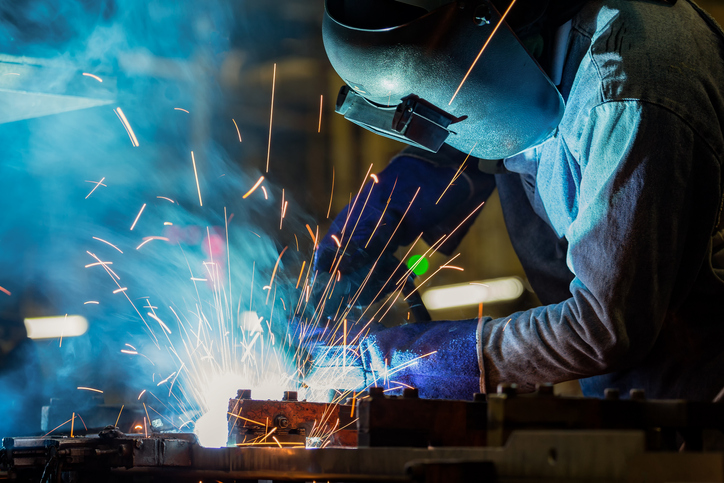
Professionals in a welding career can also make changes to their process by utilizing metal-cored or flux-cored wires instead of a solid wire, which is conventionally used in GMAW applications. Depending on the materials being welded, a metal-cored wire can result in faster travel speeds to boost arc-on time. Welders may also utilize different shielding gases to improve the productivity of their process. Most manufacturing operations utilize 100% carbon dioxide shielding gas, but substituting a mixed gas, such as one composed of 90% argon and 10% carbon dioxide, can produce fewer spatters and faster travel speeds. This allows welders to spend less time on post-weld grinding—increasing arc-on time.
2. Welders Can Check Their Parameters and Consumables to Increase Arc-On Time
Arc-on time can be negatively impacted by inaccurate parameters and faulty consumables–factors which not only increase inefficiency, but are preventable. When welding professionals check that their parameters are correctly inputted before beginning the welding procedure, they can reduce the chances of having to solve issues through rework or spending excess time on post-weld cleanup. Professionals can check parameters such as heat input, travel speed, and wire stick-out. With the right travel speed heat will be controlled, reducing spatter and optimizing penetration. Additionally, if too much wire is sticking out, there will be excessive spatter, requiring more rework and extra post-weld cleanup.
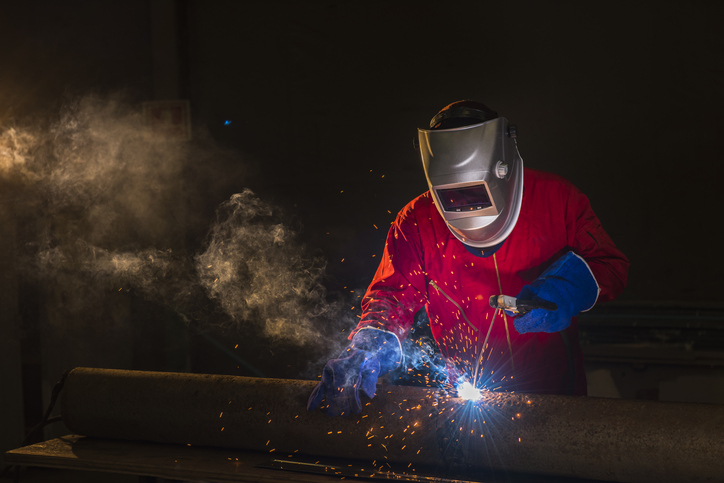
Before beginning the welding process, those in welding technician training can also ensure that their consumable connections are properly adjusted and correctly installed. Welding professionals can check for loose connections or worn weld cables to prevent a poor quality welding job or increased spatter. If the quality of these connections is confirmed beforehand, troubleshooting time can be reduced.
3. Take Advantage of Technology to Increase Arc-On Time
Advances in technology offer many advantages to welders looking to improve their arc-on time and increase efficiency. Technology is being increasingly used to improve welding power sources–making welding machines more accurate and easier to use. Some welding power sources today feature synergetic control, which allows them to automatically make changes in accordance with the operator’s adjustments. This also allows the operator to increase their arc-on time without worrying about parameters. Today, welding systems also offer a simplified machine setup–reducing the time welders spend setting up by adjusting other parameters according to the material thickness. These technologies improve accuracy, reducing spatter and post-weld cleaning to optimize arc-on time.
While these three factors contribute to increased arc-on time, those interested in entering a career in welding can also increase their arc-on time by receiving the proper training. Students at the North American Trade Schools’ (NATS) welding program benefit from hands-on training to prepare for a welding career. For welding graduate Emily Harrison, her “favourite thing about [NATS] was the knowledge of the teachers and how much practical work you were able to do.” With training from NATS, you’ll be equipped to identify ways in which arc-on time can be increased throughout your welding career.
Are you interested in taking welding courses?
The North American Trade Schools’ welding program can launch your career—learn more today!
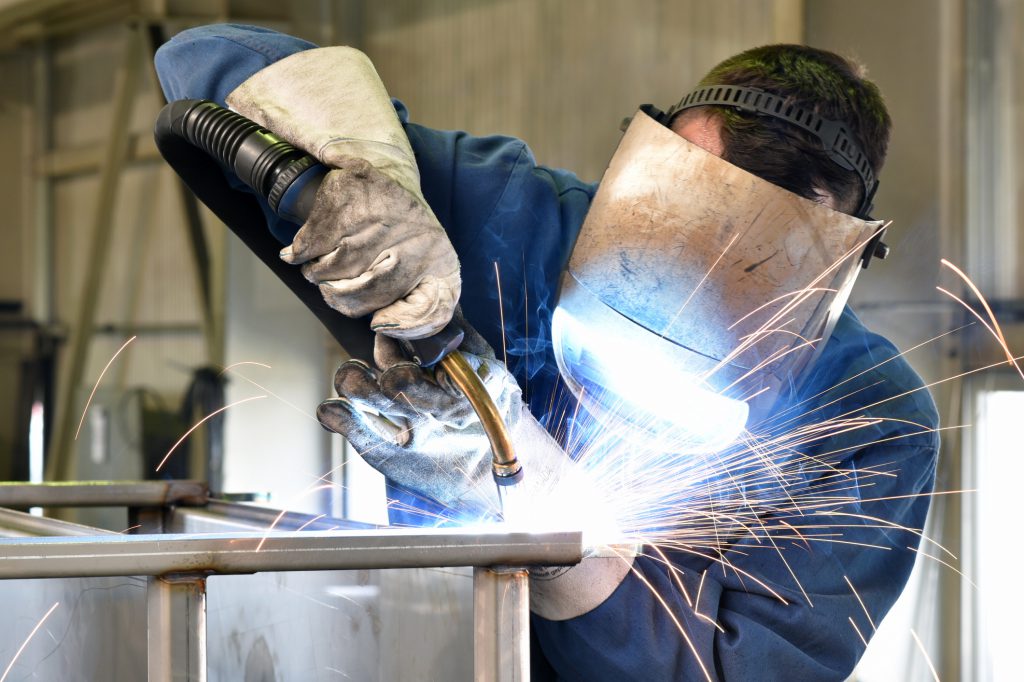
If you’re considering a career in welding, it’s more than likely that you’ll be using the 7018 welding rod for various welding purposes. The type of welding rod used for a project depends on the material being used and the requirements of the job at hand. Welders must consider factors such as corrosion resistance, tensile strength, polarity, weld position, and more. A common type of welding rod is a welding electrode, a coated metal wire composed of materials that are consistent with the metals being welded.
There are many different types of welding electrodes, which come in different levels of coating and different sizes. Here, we’ll take a look at the 7018 arc welding rod, an electrode commonly used by welders for a number of purposes.
An Introduction to the 7018 Welding Rod for Welding College Students
The 7018 welding rod is a consumable electrode rod, and is typically used for welding carbon steel. The iron-based flux compound coating this electrode is characterized by a low hydrogen content, setting the 7018 apart from other welding rods. The 7018’s minimal amount of hydrogen allows for a weld that is both tough and resistant to cracks–making it a great option for a number of projects. When welding, its flux compound vaporizes, keeping moisture, hydrogen and air from contaminating the weld bead.
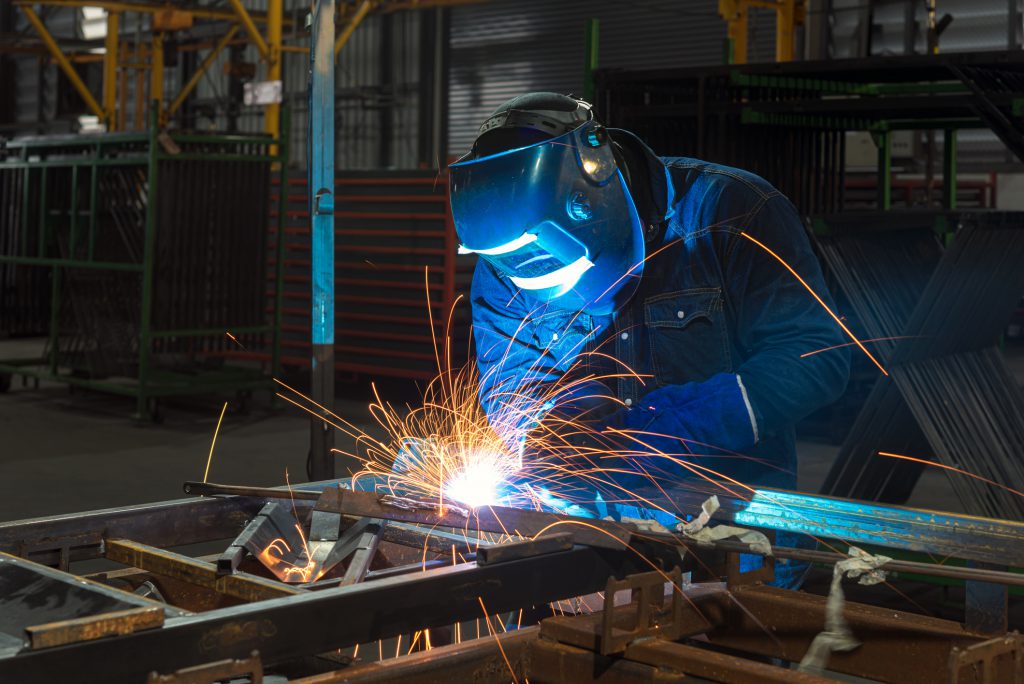
As those with welding technician training will come to learn, the 7018’s numbers can be used to understand its function, as with any welding rod. In the 7018, the “70” dictates its tensile strength, which is equal to 70,000 lbs per square inch. The third digit, the“1,” denotes the welding positions that the 7018 can be used for. The number 1 means that the 7018 can be used for any welding position. The “8” signals the electrode’s coating type–the kinds of current which can be used, and its penetration. In the 7018, the “8” shows that it’s composed of a low-hydrogen flux compound, which allows for a medium-penetration weld compatible with AC, DCEP, and DC currents.
When Do Welders Use the 7018?
The 7018 has a wide range of applications, making it a popular choice among welders for a number of projects. Not only can it be used in any welding position and with a number of different currents, but it produces a relatively steady arc with a low quantity of splatter. The 7018 is used mostly for structural welding due to the strong and ductile weld it produces, and its versatility qualifies this rod for a number of different applications. In addition to structural projects such as high-rise buildings, dams, and bridges— which benefit from the high degree of strength characteristic of the welds created by the 7018—this electrode can also be used to weld pressure vessels, pipes, boilers, and other powerful equipment.
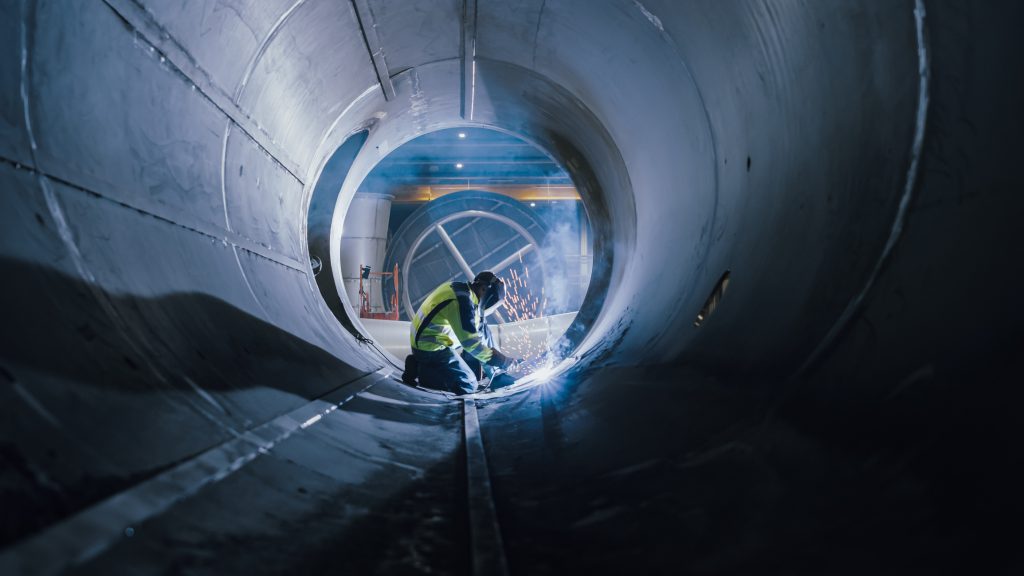
If You’re in Welding Technician Training, Here’s How to Use the 7018
When welding with the 7018 electrode, it’s important to follow a few requirements. First, welding students should make sure to use the correct welding amperage. The right amperage depends on the diameter of the rod in use, which is determined by the thickness of the steel being welded. When using a 7018 welding rod, the welding pro should keep in mind that the strength of these welds tends to make them solidify more rapidly. This welding rod is a consumable electrode–meaning it gets shorter throughout the welding process. Thus, welders should be careful to continuously keep a consistent distance between the electrode’s tip and the metal while concentrating heat at the joint of the weld. The 7018 should be dragged along the metal to ensure that the filler material is secure. With experience, welders will be able to feel when the weld is firmly fixed.
Learning how to use the 7018 takes some practice, relying upon the level of knowledge that can be gained from the right type of welding college program. The North American Trade Schools’ welding program allows students to gain the hands-on training necessary to become skilled experts in the industry. For Welding Graduate Emily Harrison, her “favourite thing about the campus was the knowledge of the teachers and how much practical work you were able to do. It was very helpful.”
Are you ready to learn from the best?
Explore welding classes at NATS today!
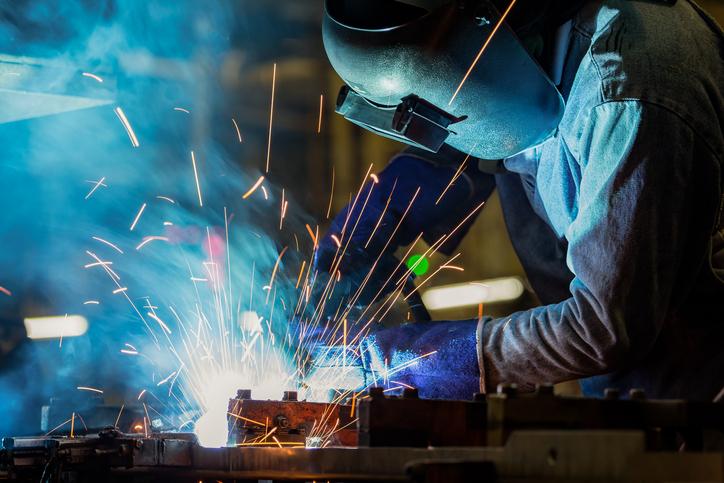 Both MIG and TIG welding are procedures that use electrical arcs to create enough heat for melting down metals into liquids. Both methods use filler material to join metal pieces together, and inert gas is also used to prevent welding electrode corrosion for both procedures. Despite these similarities, these welding types remain quite different in their approach, and with different purposes for their use.
Both MIG and TIG welding are procedures that use electrical arcs to create enough heat for melting down metals into liquids. Both methods use filler material to join metal pieces together, and inert gas is also used to prevent welding electrode corrosion for both procedures. Despite these similarities, these welding types remain quite different in their approach, and with different purposes for their use.
Generally speaking, MIG welding is a good low-cost bet for completing jobs on steel and aluminum quickly, whereas TIG welding is typically reserved for more expensive, high-quality, and precise jobs–requiring more training to master and taking a lot longer to complete.
For a better understanding of which welding type to use and when, let’s take a closer look at both of these processes!
What Is MIG Welding?
This type of welding is often called ‘point and shoot’ welding due to its similarities to aiming and pulling the trigger on a gun. Metal inert gas (MIG) welding works by feeding metal wire continuously from a spool connected to an electrode into the weld–with wire being used to join the two metal objects together as a filler material.
An electric current flows through the filler wire to produce an arc. While it’s touching the metal being welded, the arc is generated. With this short-circuit welding process, you move the gun at a steady speed along the joint upon starting the arc until the job is done.
Pros with welding technician training may know that MIG welding is effective on many thicker types of sheet metal. It’s also a lot easier to pick up as a trade, and a faster process than the more precise art of TIG welding.
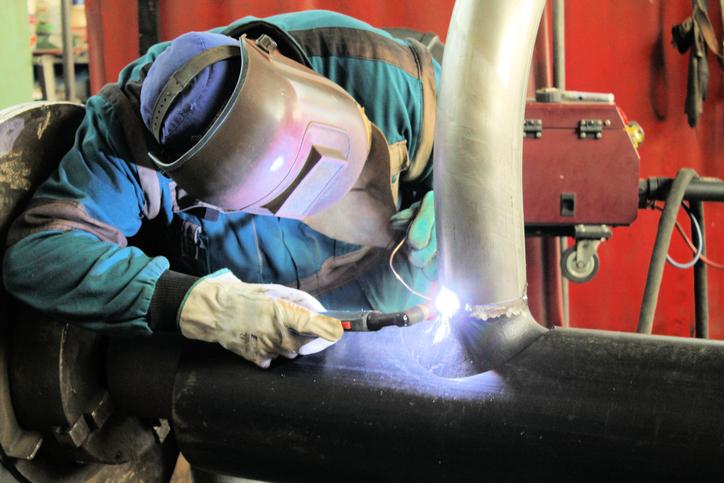
What Is TIG Welding?
If you’re interested in attending welding school, you’ll eventually hear about the more finicky art of tungsten inert gas (TIG) welding. Here, the metals you’re looking to weld together need to have a tungsten electrode running a current through them. Once the metals have been liquefied by the heat of the electrode, you join the pieces together by putting filler material into the weld puddle.
Unlike the one-handed use of a MIG welder, TIG welding requires both of your hands for the filler and the torch, since they are separate here. You control the electricity coming to your torch via a foot pedal, which allows for a level of deep penetration and accuracy that prevents the arc weld splatter that can result from a more basic MIG job.
In order to feed the wire, you must have a steady hand and stay extremely focused while moving through the weld. The level of control made possible by this procedure allows for a much cleaner weld—perfect for high precision, more advanced jobs. With TIG welding, you don’t even necessarily need filler material to get a successful join.
How to Decide Which One to Use After Welding Technician Training
With any weld job, looking at some key components of the work at hand will help you decide whether to use the MIG or TIG approach. Cost is your first consideration, with TIG jobs typically being much more time consuming, and therefore more expensive to complete. To execute fast and low-cost jobs, MIG is best.
The thickness of the metals you wish to weld is next on the list, with MIG welds generally being much more effective on thicker, bigger pieces of sheet metal than TIG. Finally, you should consider the aesthetics of the job. Welding requiring any filler material is usually a messier procedure. The precise metal-to-metal welds that TIG welding can enable is splatter-free, allowing for the smooth, neater surface you’re looking for.

When talking about MIG and TIG welding, it’s really not possible to say that one type of welding is definitively better than another. Both procedures are necessary in the world of liquefying and joining metals, and both take a good deal of training to master—with MIG being the more basic starter skill that can later lead to performing the more precise art of TIG welding.
Are you interested in pursuing a thriving career by taking professional welding classes?
Contact North American Trade Schools today for more information on its exciting welding diploma program!
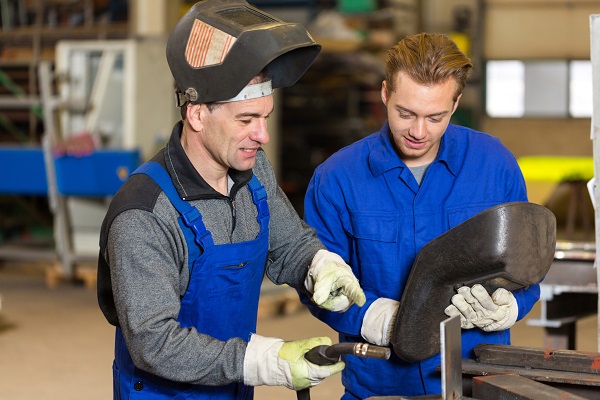
The beginning of a new year, particularly a new decade, is the perfect time to consider starting a new career. If you’re a practical person looking for a challenging but rewarding trade which offers high pay and the opportunity to work in various countries and industries, welding could be the industry for you.
Welders make and put together metal parts using heat. They are most commonly employed in the oil, gas and mining industries, but also work in the automotive, marine and military sectors.
Skilled welders are always in demand, and this demand is expected to increase this year thanks to retirement numbers and developments in energy and manufacturing.
Read on to find out why now is the perfect time to enrol in welding training.
Welders Are Always in Demand
Figures show that this year Canada could face a ‘baby boomer retirement’ crisis, as ‘baby boomers’ (those born between 1946 – 1964) retire in huge numbers. This is good news for those starting a new career in a trade like welding, as there will be plenty of job opportunities. The Canadian Government estimates that may be as many as 24,000 new job openings across the country between 2017 and 2026.
As well as this, there is lots of development happening in the energy sector right now which will create demand for welders. The nation is looking to invest in better sources of renewable energy, as well as continuing to build infrastructure for current sources like wind turbines and solar panels. These are often made using metal, meaning that welders will be needed.

Skilled welders with specialized experience in Gas Metal Arc Welding (GMAW), Gas Tungsten Arc Welding (GTAW), Flux Cored Arc Welding (FCAW), and Shielded Metal Arc Welding (SMAW) are among the most in-demand.
As part of your welding technician training at North American Trade School, you will gain practical experience in each of these techniques, putting you in an excellent position to find employment after graduating.
Work in a Variety of Industries with Welding Technician Training
Studying to become a welder can lead to a career in a wide variety of industries. Welders are needed in almost every area of manufacturing, construction, energy, and repair and maintenance, and are also able to switch between industries throughout their careers.
Welders can choose to work in factories, on ships or shipyards, as part of the military repairing military tanks and vehicles, as well as in the engineering, oil, gas and mining industries.
As well as this, there is always the opportunity to take your career a step further with extra studying, which could open up opportunities in robotics or education.
The Opportunity to Travel the World
If you’re looking for a career that will take you all over the world, then look no further. Demand for welders is increasing internationally, not just in Canada.
You can also work in interesting and unusual environments. A welder working on board a cruise ship, for example, would be able to visit multiple countries while working, and would also benefit from high pay, as well as free room and board.
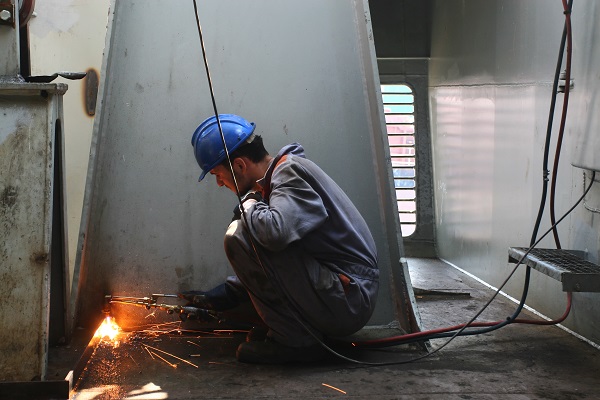
Additionally, some welding jobs structure their contracts to allow you a lot of time off, such as roles where you work on the road for six months and then have six months off.
Earn a Competitive Salary
Welder salaries vary depending on skill, experience and location. Highly skilled welders that are prepared to travel can earn well over six figures. Welders working with the military in the Middle East can also expect to receive high pay because of the risk involved.
Are you interested in taking the next step in your career with welding training?
Contact North American Trade School to find out more!
Key words: welding training, welding technician training, become a welder
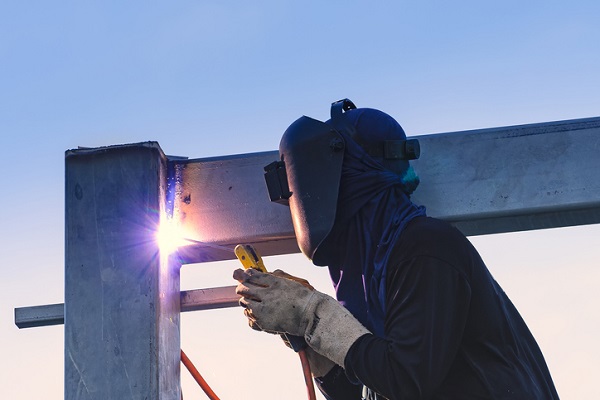 Welding is a great job to have if you want to travel. Although you might not think it at first, a welding career can open up several different opportunities for travelling, in a number of different work environments. Working as a travelling welder—or “road warrior,” as they’re called—can be extremely exciting, and it also gives you the opportunity to demonstrate your knowledge of the craft in various locales.
Welding is a great job to have if you want to travel. Although you might not think it at first, a welding career can open up several different opportunities for travelling, in a number of different work environments. Working as a travelling welder—or “road warrior,” as they’re called—can be extremely exciting, and it also gives you the opportunity to demonstrate your knowledge of the craft in various locales.
With many situations in which those in the field can perform their duties while seeing various parts of the country, welding is a field with plenty to look forward to after your training. Here are three opportunities in the welding industry that can involve travelling.
You Can Pursue Work as an Underwater Welder
If you have a love for both welding and swimming and have a strong willingness to travel, this could be the ideal way for you to marry the two. By working as an underwater welder, you’ll be working in aquatic locales in rivers, lakes, and oceans to help repair or construct infrastructure, such as dams, oil rigs, pipelines, ships, bridges, and more.
Underwater welding is only for the most experienced of welders, and to get this job you’ll also need your diving certification, which you can pursue after your welding diploma. Since underwater welders are a relatively rare breed, this is definitely a career choice that could result in you travelling or relocating entirely.
You Could Also Become a Structural Welder for Industrial Buildings
As an industrial structural welder, you can travel between factories during shutdowns to repair or maintain industrial buildings and energy plants. In this kind of role, you can expect to spend a significant amount of time on the road, going to the facilities where your skills are required. Industrial shutdown work is often fairly easy to come by, even if major plants tend to have a limited period of being shut down (i.e., about a week or so). However, being able to travel frequently and for certain stretches of time could be a definite boost to your welder career—not to mention you’ll be helping manufacturers keep their plants running smoothly.
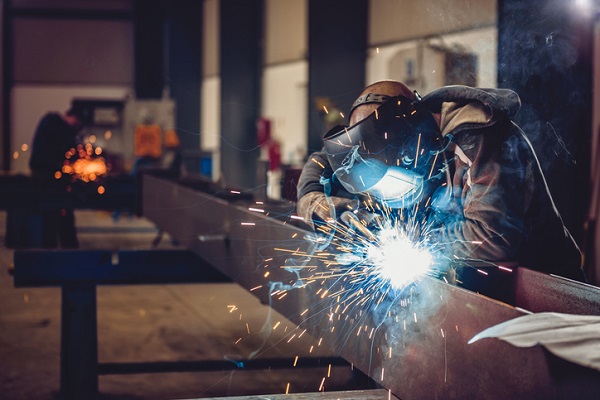
You Could Also Work at Shipyards or on Ships in Your Welder Career
Becoming a welder in the shipping industry can also be an exciting opportunity if you’re intrigued by the idea of taking your skills out to sea. Not only is there plenty of variety to be found in the industry as a welder, but the breadth of locales you could find yourself working in can also make this kind of job a particularly rewarding one. You can help to construct various types of ships—in which case you would work in a shipyard—or you could do maintenance tasks onboard a ship, which can involve living on the ship while it is at sea. In either case, the locations where you could find yourself working can be wide ranging. Likewise, onboard maintenance welding jobs can result in you working in different countries often, such as if you’re working on a cruise ship or container ship.
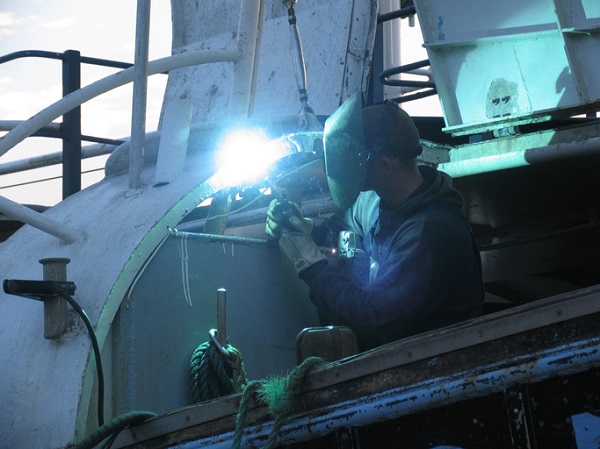
Want to start your welding technician training?
Contact North American Trade Schools to learn more!
Why Learning About Shielded Metal Arc Welding Can Help Your Welding Career
September 10, 2019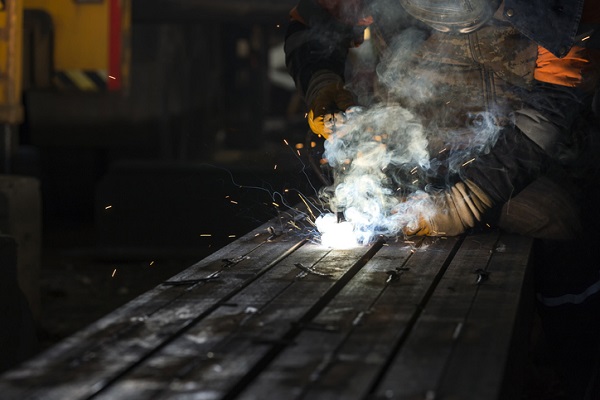
It’s an essential process for aspiring welders to learning, but how exactly does it work, and why do you need it in your welding career? Shielded metal arc welding (SMAW)—known by some as “stick welding”—is where a weld is made through an electric current that forms an arc between a weld pool and a flux-covered electrode, leading to the formation of gases that shield the weld pool and give it a layer of slag. As a result, the weld is protected from contamination.
Being one of the most basic and oldest welding techniques, SMAW may seem at first like it has a big learning curve, but it is actually quite simple once you’ve fully understood its inner workings. Here’s how SMAW works, and how it can be helpful for you and your welding career.
Those in Welding Technician Training Should Familiarize Themselves With the Process
Since it’s one of the simplest processes in welding, it goes without saying that those hoping to have a career in the profession should understand how shielded metal arc welding works. First, the electrode briefly comes into contact with the workpiece, striking the arc, which results in parts of the electrode being passed onto the weld pool before the covering disintegrates and forms protective gases. With the power source connected to a circuit, one of its two output terminals makes a connection with the electrode either with alternating current or direct current. Additionally, SMAW electrodes contain covering with various elements and materials that allow the welding process to be carried out, as not having the covering would make the arc hard to maintain and cause the weld bead to be improperly shaped.
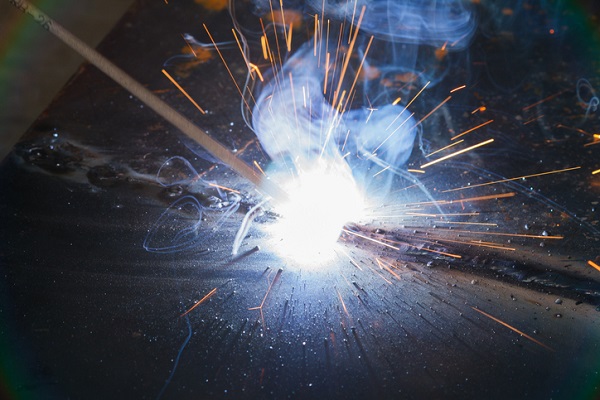
Shielded Metal Arc Welding Needs to Meet Three Criteria to Work
Since SMAW is something you’ll learn in welding technician training, it’s important to remember that there are three steps the electrode in any SMAW application must take to properly weld. These are the ability to shield both the weld metal and the arc, the adding of metal to the weld, and the ability to sustain the arc. Furthermore, SMAW has three additional functions when the covering is heated well enough, which are the formation of the shield for the metal and the arc; the covering ionizing so that it can support the arc plasma; and the fluxing of the metal so it forms a cover on the weld bead as it cools, eventually giving off gases to avoid any contamination to the weld.
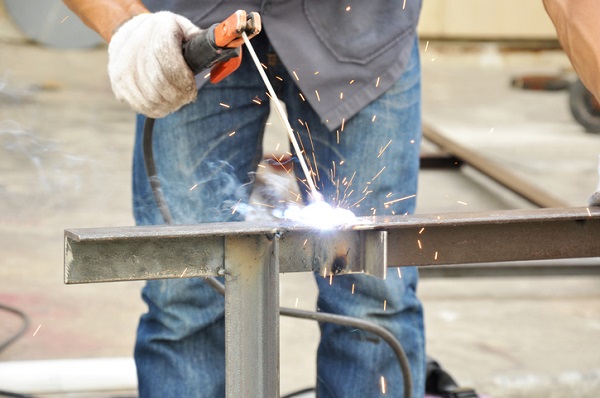
There Are Many Upsides to This Type of Welding—and Various Things it Can Weld, Too
The advantages of performing SMAW for your welding career are vast. Not only can it suitably weld a number of different alloys, metals and steels, but it’s also a process with various other upsides, not the least of which are its simplicity and relatively inexpensive nature. For example, the SMAW process isn’t as draft or wind-sensitive as gas shielded arc welding can be, nor does it necessitate the use of auxiliary gas shields. SMAW can also be applied to various welding positions, as well as its electrodes being able to access, and be applied to, hard-to-reach areas such as blind spots. Given how versatile and productive the process can be, it’s easy to see how advantageous it is for many welding projects.
Want to get your welding diploma?
Contact North American Trade Schools for more information about our Welding diploma program!
